What is IT Financial Management (ITFM): Best Practices and Tools
When it comes to drafting up the yearly budget, IT organizations are always looking to gain efficiencies. This could involve cuts to programs, salaries, or physical equipment. There is always more money to be saved.

Sometimes, it is not about making cuts but simply managing finances more efficiently. For example, this could be re-prioritization of funds toward new programs or employee hiring.
Regardless, an IT Financial Management (ITFM) system can help plan, maintain, and meet the economic goals set forth. Let us take a look at some of the essential elements of ITFM.
What is IT Financial Management?
IT Financial Management (ITFM) is a framework put in place to manage all IT expenditures, including assets and operational costs. ITFM attempts to use financial governance and metric-based cost management strategies to provide financial transparency. It also works to join organizational processes with business objectives.
Most departments in an organization require IT services like acquiring and setting up computers, cell phones, printers, and more. That means ITFM plays a near organization-wide role and is very important to shaping a budget.
ITFM can be an overall benefit to an organization's IT Service Management (ITSM) processes.
Further, ITFM can be applied to both an internal IT organization as well as outsourced IT. For outsourced IT, the service provider would not only be able to report to the hiring company IT costs but assist in planning change strategies and budgets for future needs.
ITFM Best Practices
There are several ways by which you can leverage ITFM to save your organization money. When looking for best practices for IT financial management, these tips should be at the top of your list:
- Align ITFM goals with overall business objectives to ensure strategic alignment
- Implement a structured ITFM framework that encompasses budgeting, accounting, and financial reporting
- Define standardized processes for cost allocation and resource management
- Provide transparency into IT costs for both IT and non-IT stakeholders
- Use clear and understandable terminology to communicate costs
- Implement robust forecasting mechanisms to anticipate future IT expenditures
- Regularly benchmark IT costs against industry standards and best practices and use them to identify areas for cost optimization
- Implement IT chargeback or showback mechanisms to demonstrate the value of IT services
- Include risk management in ITFM practices to anticipate and mitigate financial risks
- Provide training for IT and non-IT staff on ITFM concepts and practices
- Conduct regular audits to ensure compliance with financial regulations and policies
- Integrate ITFM with overall IT governance processes to ensure alignment
IT Financial Management Tools
Figuring out where to save money is going to be difficult without detailed records or instant updates. Pen and paper, or even an excel spreadsheet will probably not suffice. You need an automated system that is monitoring angles of your organization for you behind the scenes. The following are several ITFM tools that organizations can consider:
-
Apptio
Apptio offers a wide-range of ITFM products for your organization. The entry level offering, called ApptioOne streamlines both financial and operational data into one repeatable report. It allows IT professionals to categorize costs, and plan for the future by setting metrics and KPIs. The dashboard is bright, bold and easy to follow along with.
Key benefit: Ease of use
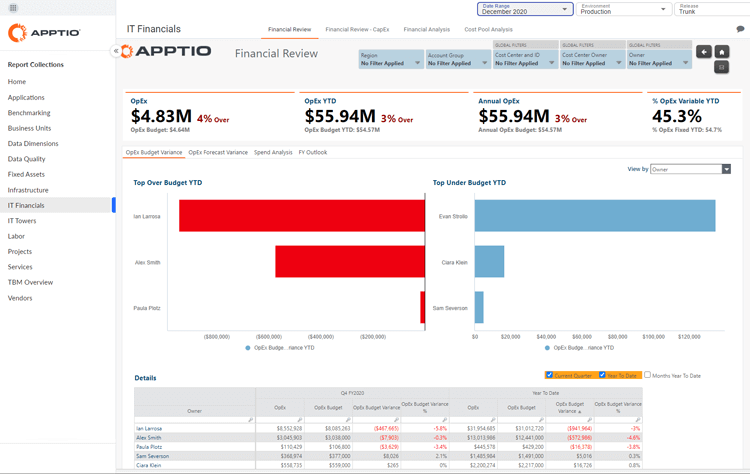 Image courtesy of Apptio
Image courtesy of Apptio -
ComSci
Developed by Upland Software, ComSci offers IT professionals a wide-range of tools to improve their approach to ITFM. The colorful dashboards provide information on the usage of your IT products, cloud usage and other services. This helps to determine what to keep and what to consider cutting. It also provides insights tailored to the organization, vendor analysis, and forecasting.
Key benefit: Most useful for checking on IT-related product usage
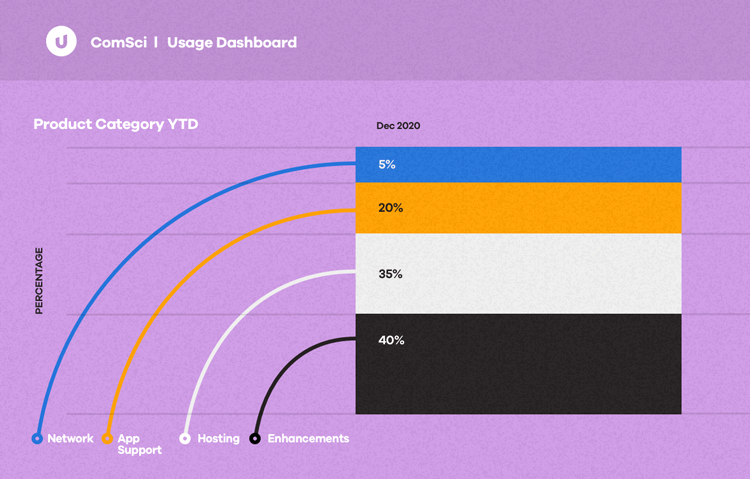 Image courtesy of Upland Software
Image courtesy of Upland Software -
Nicus ITFM Suite
Nicus ITFM is all about offering the best in self-service and the creation of workflows. It helps IT professionals to paint a picture of how each piece of technology is helping (or not) an organization. Helps promote transparency of costs per each vendor being used, see benchmarks, and forecast for the future.
Key benefit: Puts data and explanations into terms that those who are not in IT or finance can easily understand
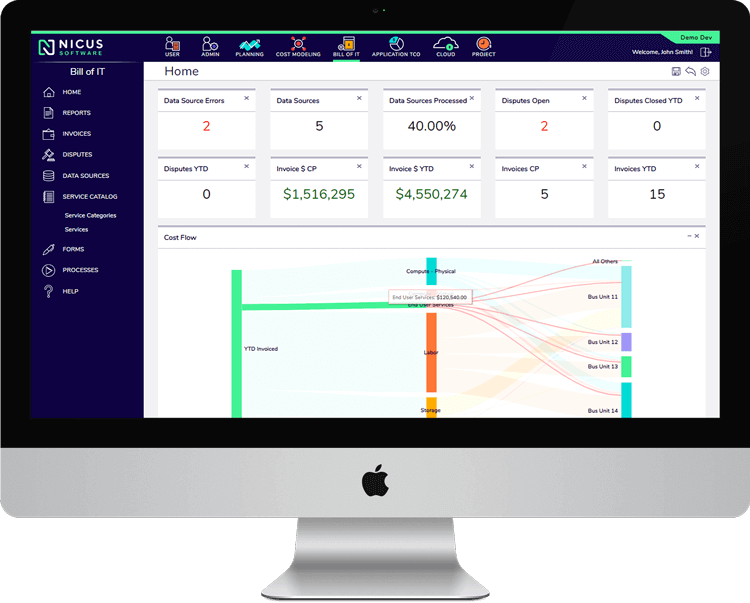
-
CostLens
CostLens ITFM software features granular cost allocation, real-time financial analytics, automated budget tracking, and seamless integration across IT systems. These enable organizations to allocate costs with precision and detailed insights. The real-time financial analytics empower users to make informed decisions on the fly, while automated budget tracking ensures accuracy and efficiency in financial management.
Key benefit: Seamless integration enhances data accuracy and accessibility
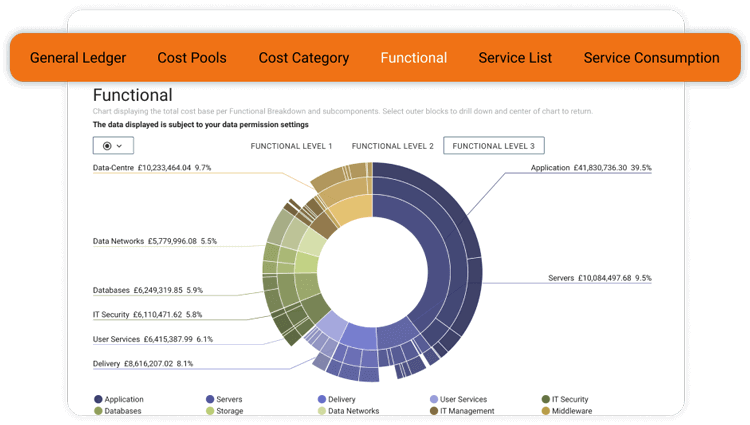 Image courtesy of Amalytics
Image courtesy of Amalytics -
MagicOrange
MagicOrange offers automated cost allocation, dynamic financial modeling, intuitive dashboards, and robust analytics. These work together to assist in correlating IT costs directly with business outcomes. The platform's user-friendly interfaces enhance accessibility.
Key benefit: Helps with understanding the true cost and profitability of products and services
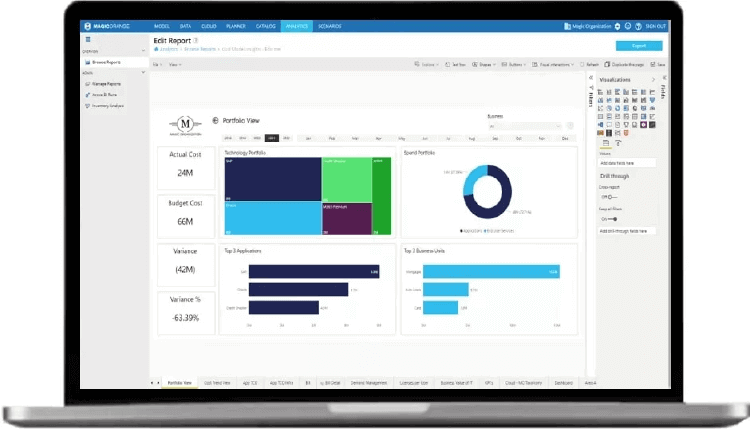 Image courtesy of MagicOrange
Image courtesy of MagicOrange
ITFM Informational and Support Resources
The IT Financial Management Association (ITFMA) was founded in 1988 and is a valuable resource dedicated to the IT Financial Management Profession. Their website provides a wide range of ITFM tools and resources including the following and much more:
Upcoming IT Financial Management Conference Information
An IT Financial Management Certification Program
IT Financial Management Books which can be ordered through their website
The Bottom Line: ITFM Brings Cohesiveness and Transparency
IT Financial Management (ITFM) is beneficial for organizations as it provides transparency, control, and strategic alignment in managing IT costs and resources. It helps give clear insights into IT expenditures and facilitates cost optimization. This helps align IT spending with business objectives. ITFM can enhance efficiency, mitigate financial risks, and demonstrate the value of IT services to stakeholders.





